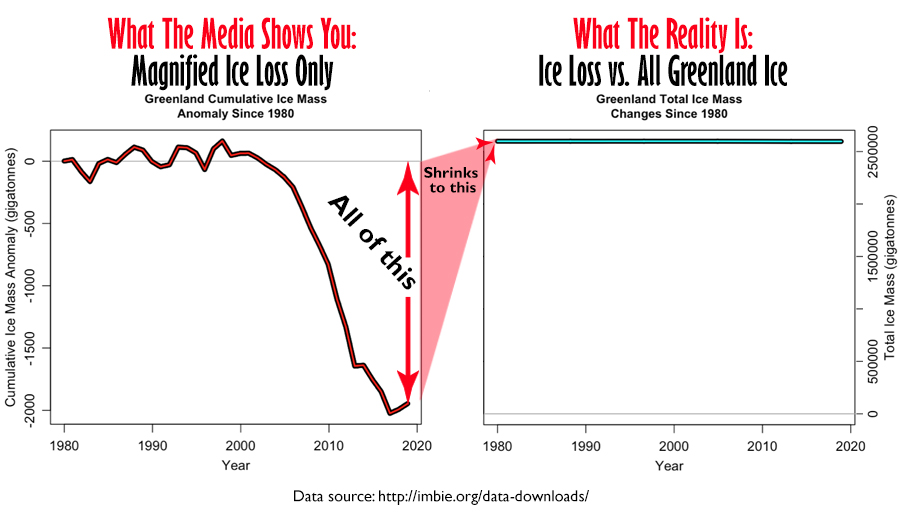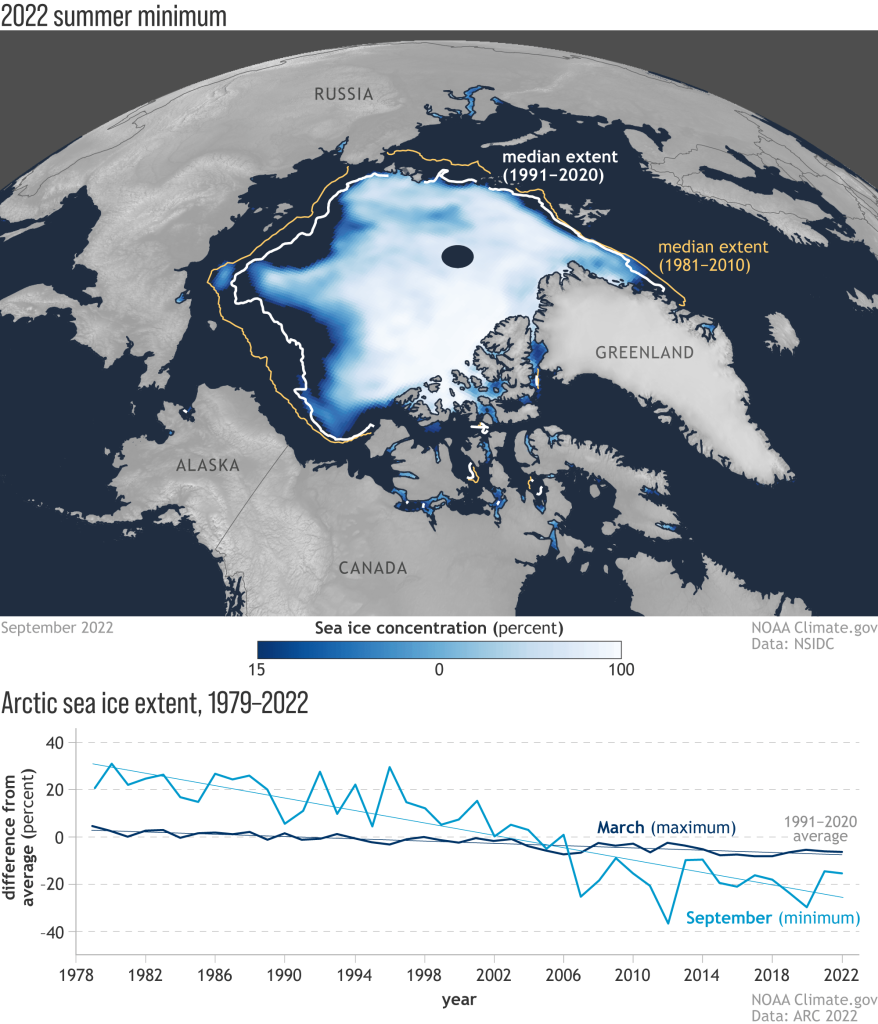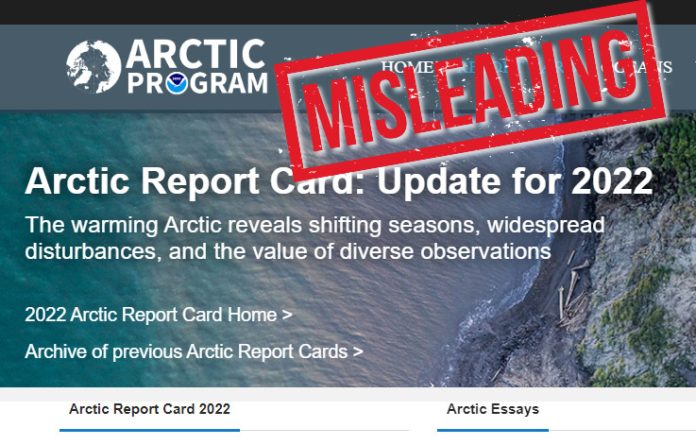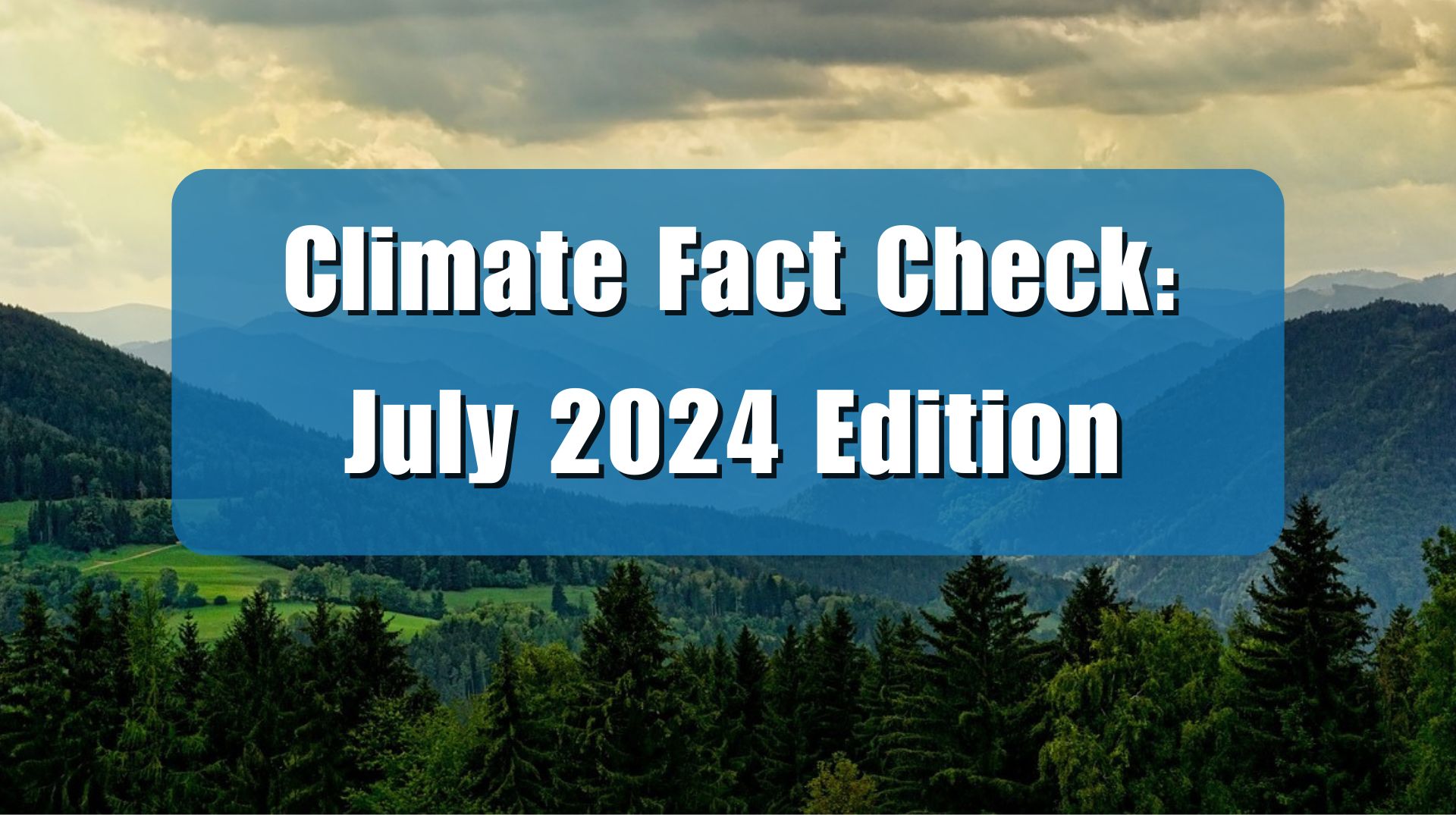Over the past week, multiple media outlets have reported on the National Oceanic and Atmospheric Administration’s (NOAA) “Arctic Report Card for 2022,” issued on December 13, 2022. The report was touted in a press release from NOAA titled “Human-caused climate change fuels warmer, wetter, stormier Arctic.” This represents the first time that NOAA has directly blamed humans for issues in the Arctic, but the report title is a misleading, since the report itself provides no data tying supposed human caused climate change to the changes it discusses in the Arctic.
Sadly, rather than checking the facts, most media outlets discussing the report are simply regurgitating NOAA’s Arctic claims, such as CNBC did in its story “The Arctic is getting warmer and stormier, and ship traffic is increasing as ice melts.”
Unfortunately, when reporting on NOAA’s press release and Arctic Report Card, the media uncritically listed NOAA’s collection of bad news talking points, and in the process completely missed the scale and relevance of NOAA’s claims. Worse, they missed the good news contained in the report entirely.
Susan Crockford, Ph.D., writing on her website polarbearscience.com had this to say:
NOAAs annual Arctic Report Card is, for the most part, a valiant effort to turn good and ambiguous news into harbingers of climate change disaster. Primary productivity is up across most of the region (good news for wildlife) and despite Arctic temperatures being “twice as high” as the rest of the world in recent years, the summer sea ice ‘death spiral’ has failed to materialize.
Crockford is correct. For example, one of the bad news talking points from NOAA is:
The Greenland Ice Sheet experienced its 25th consecutive year of ice loss. In September 2022, unprecedented late-season warming created surface melt conditions over 36% of the ice sheet, including at the 10,500 ft ice sheet summit.
The ice loss is framed as being something significant and bad, but as pointed out in Climate at a Glance: Greenland Ice Melt, when recent ice loss is compared to the full Greenland ice sheet, the loss is so small that it is almost undetectable, as seen in Figure 1 below.

NOAA and the media show you magnified graphs that don’t show the scale of all total ice. When the entire mass of Greenland ice is shown to scale, that 25 years of ice loss is barely noticeable.
Further, science has discovered expansions and declines in Greenland’s ice have not tracked surface air temperatures historically.
Dr Andrew Newton, jointly affiliated with both The University of Manchester and Queen’s University Belfast said in a 2019 press release: “This is an important result because it shows that over the last 2.7 million years the Greenland and Antarctic ice sheets has been highly dynamic, even when temperatures outside the ice ages were not as warm as today.”
In a nod to the “dynamic” nature of Arctic ice in Greenland, an ice core taken in 1963 found ancient leaves preserved under a mile of Greenland’s ice – suggesting Greenland was much warmer 50,000 to 400,000 years ago.
Yet NOAA and the media would have you believe humans are in control of the Arctic temperature, not natural processes.
Another misleading claim made in NOAA’s report discussed by the media concerns the loss of Arctic Sea ice. As Crockford points out, much like the Greenland ice loss, the loss of sea ice is being presented without context. She writes, referring to Figure 2 below: “The graph at the bottom of this graphic, spread out rather than bunched up to make changes seem more dramatic, makes it much easier to see the lack of a declining trend in sea ice extent since 2007, and that winter (March) coverage has changed hardly at all.”

As seen in Figure 2, March maximum remains flat, and the graph illustrates a blue trend line showing a steady decline of the September minimum. But what NOAA does not point out is that since 2007, there has been little change.
This is satellite derived data going back to around 1980. A forty-year window of observations doesn’t allow NOAA to make broad factual conclusions about Earth’s ice processes and cycles spanning thousands of years. The same can be said about “stormier conditions” claimed in the report. Prior to satellite imagery, science had no way to track this.
One bit of good news that is buried in the report, and thus almost uniformly ignored in the media’s coverage of it, is the increase in “primary productivity” in the Arctic since 2000. Primary productivity is the process by which organisms, for example, microbial life, phytoplankton, plankton, algae, and plants, make their own food from inorganic sources.
Concerning primary productivity, NOAA’s Arctic Report Card says: “All regions continue to exhibit positive trends in primary productivity over the 2003-22 period, with the strongest trends in the Eurasian Arctic and Barents Sea.”
Crockford explains why this is good news, writing “[t]he report by Frey and colleagues this year updates those from the last few reports and confirms that primary productivity–which means more food for seals, walrus, and polar bears–is still high in summer due to less sea ice coverage, especially in the Barents Sea, the Russian Arctic, the Bering/Chukchi Seas.”
It is no wonder then that the NOAA report doesn’t mention the plight of the polar bear, that darling poster child for the Arctic, because polar bear numbers have been increasing!
NOAA’s report bemoans the fact that ship traffic has been increasing in the Arctic, unjustifiably assuming that increased shipping traffic is necessarily a bad thing.
“Satellite records from 2009 to 2018 show increasing maritime ship traffic in the Arctic as sea ice declines,” reports NOAA. “The most significant increases in maritime traffic are occurring from the Pacific Ocean through the Bering Strait and Beaufort Sea.”
NOAA ignores the fact that ship traffic has increased in part due to the hyperbolic claims made by climate alarmists and parroted by the media that the Arctic is disappearing due to climate change. This has resulted in a number of ocean touring companies offering tours into the Bering sea so that eco-tourists can “see it before its gone.”
The media, instead of looking into the data and facts, simply regurgitated NOAA’s talking points as if they were entirely true, becoming advocates in the process. It seems, on the issue of climate change, the mainstream media is eschewing its idealized role of reporting the facts and shining the light of truth on misleading and false claims made by the government through NOAA.
Instead, they are embracing the very definition of The Fourth Estate, which refers to the mass media explicitly embracing activism and advocacy in pursuit of goals the press deems important. Apparently, for the press, the truth is a justifiable casualty in the battle against climate change.
















